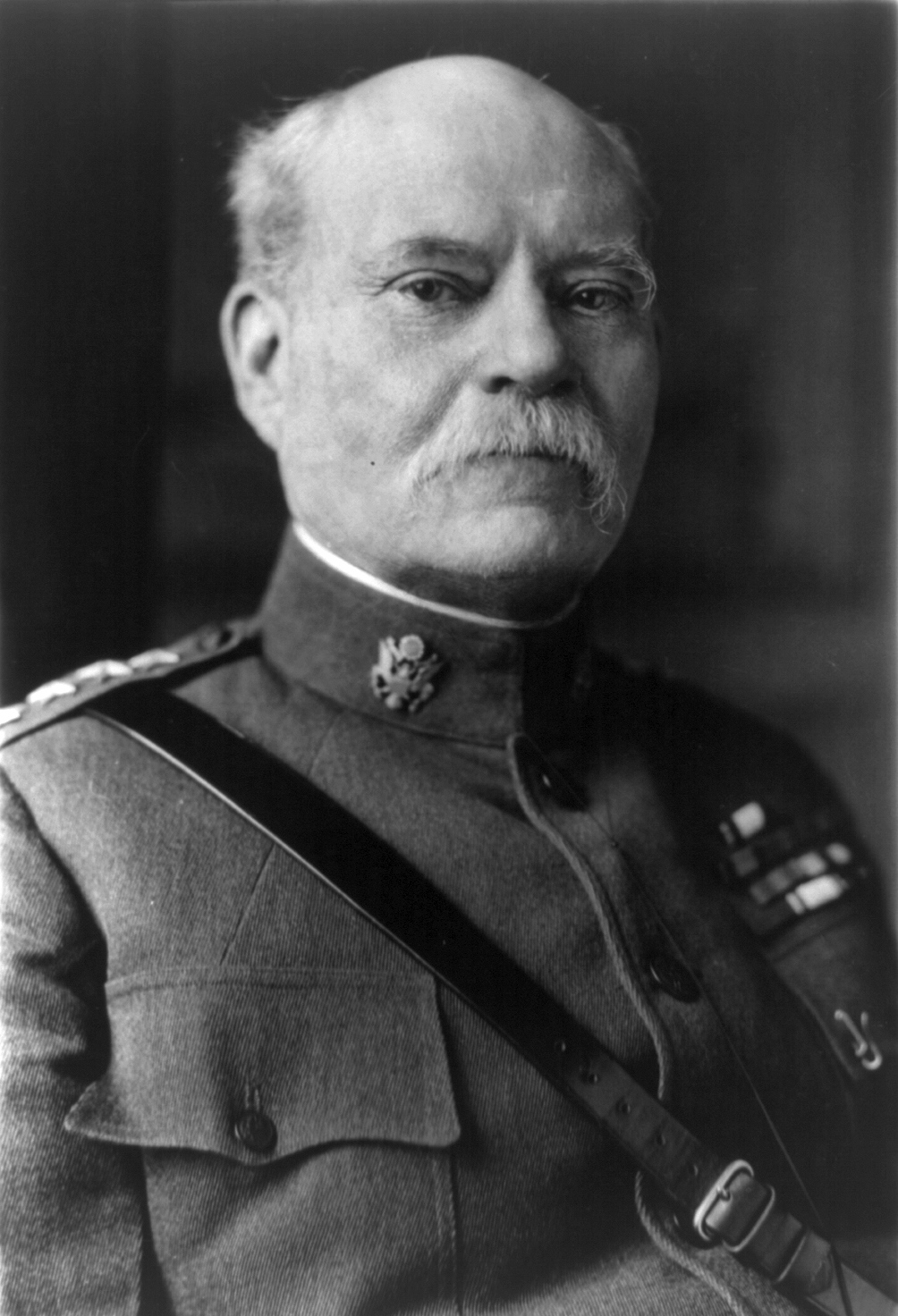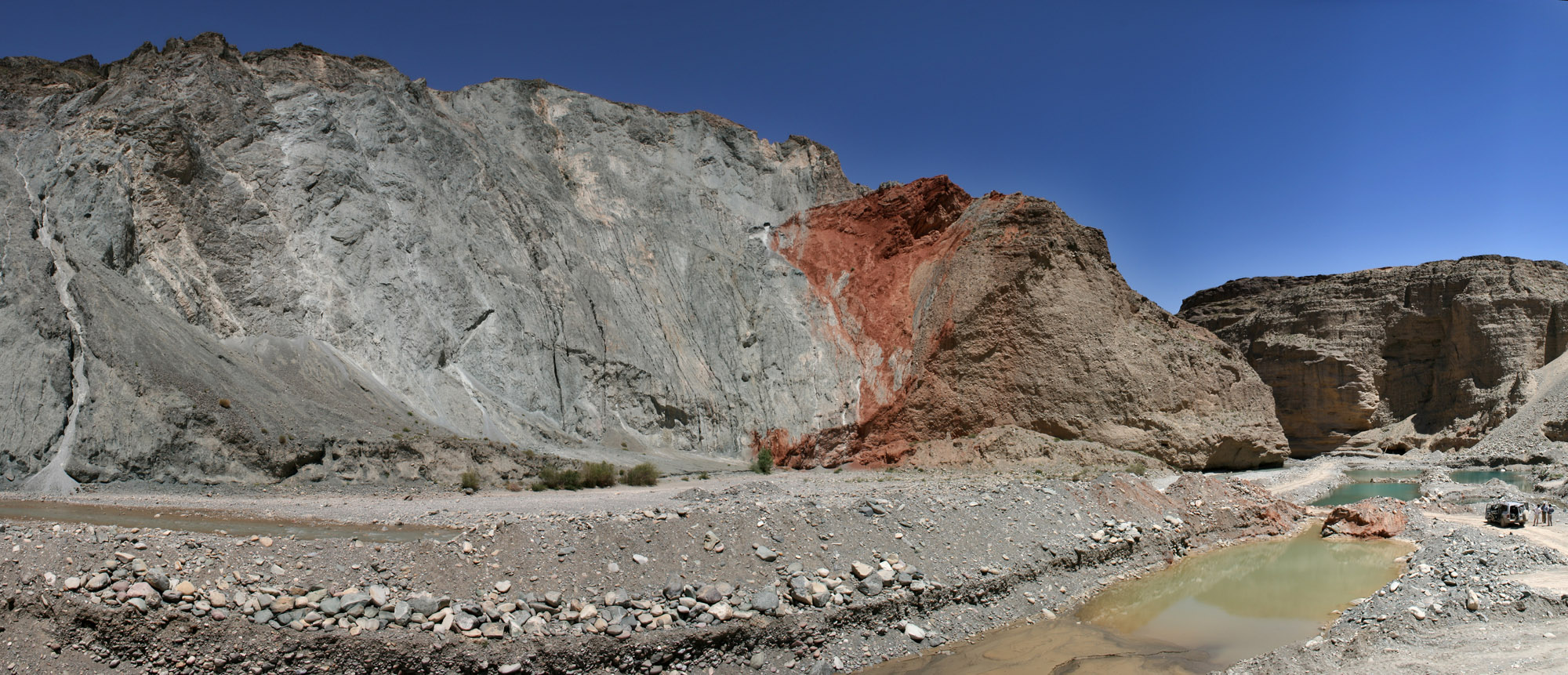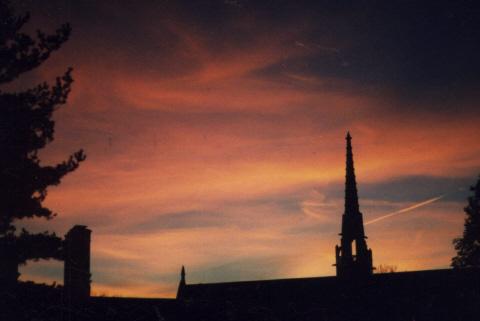|
Eleanora Bliss Knopf
Eleanora Frances Knopf ( Bliss; July 15, 1883 – January 21, 1974) was an American geologist who worked for the United States Geological Survey (USGS) and did research in the Appalachians during the first two decades of the twentieth century. She studied at Bryn Mawr College, and earned a bachelor's degree in chemistry, a master's degree in geology, and a Ph.D. in geology in 1912. She was the first American geologist to use the new technique of petrography which she pioneered in her life's work - the study of Stissing Mountain. Early life Eleanora Frances Bliss was born in Rosemont, Pennsylvania on July 15, 1883. Her father was General Tasker Howard Bliss — a career soldier who became Chief of Staff of the US Army during the First World War as well as a principal representative of the United States in the Allied Councils. Her mother was Eleanora Emma (Anderson) Bliss. Both sides of the family could trace their ancestry to settlers from England. The Bliss family home ... [...More Info...] [...Related Items...] OR: [Wikipedia] [Google] [Baidu] |
Rosemont, Pennsylvania
Rosemont is a neighborhood in Bryn Mawr, Pennsylvania, United States, on the Philadelphia Main Line. It is located in Lower Merion Township, Montgomery County, Pennsylvania, Montgomery County. It is best known as the home of Rosemont College. Rosemont is served by its own Rosemont (SEPTA station), stops on both the Paoli/Thorndale Line of SEPTA Regional Rail and the Norristown High Speed Line. The community of Garrett Hill, Pennsylvania, Garrett Hill is in Radnor Township, Delaware County, Pennsylvania, Radnor Township and in the Rosemont section. History The Joseph Sinnott Mansion was listed on the National Register of Historic Places in 1980. The neighborhood of "Beaupre" in Rosemont was once the 200-acre estate of the same name, built for Alexander Cassatt's son, Robert. The original mansion now is part of The Mansion at Rosemont, a highly rated Life Plan Community that is part of the non-profit organization Human Good.The original French iron gates flank entrances from Cones ... [...More Info...] [...Related Items...] OR: [Wikipedia] [Google] [Baidu] |
Johns Hopkins University
Johns Hopkins University (Johns Hopkins, Hopkins, or JHU) is a private university, private research university in Baltimore, Maryland. Founded in 1876, Johns Hopkins is the oldest research university in the United States and in the western hemisphere. It consistently ranks among the most prestigious universities in the United States and the world. The university was named for its first benefactor, the American entrepreneur and Quaker philanthropist Johns Hopkins. Hopkins' $7 million bequest to establish the university was the largest Philanthropy, philanthropic gift in U.S. history up to that time. Daniel Coit Gilman, who was inaugurated as :Presidents of Johns Hopkins University, Johns Hopkins's first president on February 22, 1876, led the university to revolutionize higher education in the U.S. by integrating teaching and research. In 1900, Johns Hopkins became a founding member of the American Association of Universities. The university has led all Higher education in the U ... [...More Info...] [...Related Items...] OR: [Wikipedia] [Google] [Baidu] |
Boulder Batholith
The Boulder Batholith is a relatively small batholith in southwestern Montana, United States, exposed at the surface as granite (more specifically quartz monzonite) and serving as the host rock for rich mineralized deposits at Butte and other locations. The batholith lies roughly between Butte and Helena, and between the Deer Lodge (Upper Clark Fork) Valley and the Broadwater (Upper Missouri) Valley. The volcanic Elkhorn Mountains are a large mass of forested lava associated with the batholith. The batholith is composed of at least seven, and possibly as many as 14, discrete rock masses called plutons, which had formed beneath the Earth's surface during a period of magma intrusion about 73 to 78 million years ago ( Late Cretaceous time). The rising buoyant plutons resulted from subduction along what was then the west coast of North America, which was near today's border between Montana and Idaho. Regional uplift brought the deep-seated granite to the surface, where erosio ... [...More Info...] [...Related Items...] OR: [Wikipedia] [Google] [Baidu] |
Rocky Mountains
The Rocky Mountains, also known as the Rockies, are a major mountain range and the largest mountain system in North America. The Rocky Mountains stretch in straight-line distance from the northernmost part of western Canada, to New Mexico in the southwestern United States. Depending on differing definitions between Canada and the U.S., its northern terminus is located either in northern British Columbia's Terminal Range south of the Liard River and east of the Trench, or in the northeastern foothills of the Brooks Range/ British Mountains that face the Beaufort Sea coasts between the Canning River and the Firth River across the Alaska-Yukon border. Its southernmost point is near the Albuquerque area adjacent to the Rio Grande rift and north of the Sandia–Manzano Mountain Range. Being the easternmost portion of the North American Cordillera, the Rockies are distinct from the tectonically younger Cascade Range and Sierra Nevada, which both lie farther to its west. The ... [...More Info...] [...Related Items...] OR: [Wikipedia] [Google] [Baidu] |
Stanford University
Stanford University, officially Leland Stanford Junior University, is a private research university in Stanford, California. The campus occupies , among the largest in the United States, and enrolls over 17,000 students. Stanford is considered among the most prestigious universities in the world. Stanford was founded in 1885 by Leland and Jane Stanford in memory of their only child, Leland Stanford Jr., who had died of typhoid fever at age 15 the previous year. Leland Stanford was a U.S. senator and former governor of California who made his fortune as a railroad tycoon. The school admitted its first students on October 1, 1891, as a coeducational and non-denominational institution. Stanford University struggled financially after the death of Leland Stanford in 1893 and again after much of the campus was damaged by the 1906 San Francisco earthquake. Following World War II, provost of Stanford Frederick Terman inspired and supported faculty and graduates' entrepreneu ... [...More Info...] [...Related Items...] OR: [Wikipedia] [Google] [Baidu] |
University Of Innsbruck
The University of Innsbruck (german: Leopold-Franzens-Universität Innsbruck; la, Universitas Leopoldino Franciscea) is a public research university in Innsbruck, the capital of the Austrian federal state of Tyrol, founded on October 15, 1669. It is the largest education facility in the Austrian Bundesland of Tirol, and the third largest in Austria behind Vienna University and the University of Graz. Significant contributions have been made in many branches, most of all in the physics department. Further, regarding the number of '' Web of Science''-listed publications, it occupies the third rank worldwide in the area of mountain research. In the Handelsblatt Ranking 2015, the business administration faculty ranks among the 15 best business administration faculties in German-speaking countries. History In 1562, a Jesuit grammar school was established in Innsbruck by Peter Canisius, today called " Akademisches Gymnasium Innsbruck". It was financed by the salt mines in Hall i ... [...More Info...] [...Related Items...] OR: [Wikipedia] [Google] [Baidu] |
Bruno Sander
Bruno may refer to: People and fictional characters *Bruno (name), including lists of people and fictional characters with either the given name or surname * Bruno, Duke of Saxony (died 880) * Bruno the Great (925–965), Archbishop of Cologne, Duke of Lotharingia and saint * Bruno (bishop of Verden) (920–976), German Roman Catholic bishop * Pope Gregory V (c. 972–999), born Bruno of Carinthia * Bruno of Querfurt (c. 974–1009), Christian missionary bishop, martyr and saint * Bruno of Augsburg (c. 992–1029), Bishop of Augsburg * Bruno (bishop of Würzburg) (1005–1045), German Roman Catholic bishop * Pope Leo IX (1002–1054), born Bruno of Egisheim-Dagsburg * Bruno II (1024–1057), Frisian count or margrave * Bruno the Saxon (fl. 2nd half of the 11th century), historian * Saint Bruno of Cologne (d. 1101), founder of the Carthusians * Bruno (bishop of Segni) (c. 1045–1123), Italian Roman Catholic bishop and saint * Bruno (archbishop of Trier) (died 1124), German Roman ... [...More Info...] [...Related Items...] OR: [Wikipedia] [Google] [Baidu] |
Thrust Fault
A thrust fault is a break in the Earth's crust, across which older rocks are pushed above younger rocks. Thrust geometry and nomenclature Reverse faults A thrust fault is a type of reverse fault that has a dip of 45 degrees or less. If the angle of the fault plane is lower (often less than 15 degrees from the horizontal) and the displacement of the overlying block is large (often in the kilometer range) the fault is called an ''overthrust'' or ''overthrust fault''. Erosion can remove part of the overlying block, creating a ''fenster'' (or ''window'') – when the underlying block is exposed only in a relatively small area. When erosion removes most of the overlying block, leaving island-like remnants resting on the lower block, the remnants are called ''klippen'' (singular ''klippe''). Blind thrust faults If the fault plane terminates before it reaches the Earth's surface, it is referred to as a ''blind thrust'' fault. Because of the lack of surface evidence, blind thr ... [...More Info...] [...Related Items...] OR: [Wikipedia] [Google] [Baidu] |
Harvard
Harvard University is a private Ivy League research university in Cambridge, Massachusetts. Founded in 1636 as Harvard College and named for its first benefactor, the Puritan clergyman John Harvard, it is the oldest institution of higher learning in the United States and one of the most prestigious and highly ranked universities in the world. The university is composed of ten academic faculties plus Harvard Radcliffe Institute. The Faculty of Arts and Sciences offers study in a wide range of undergraduate and graduate academic disciplines, and other faculties offer only graduate degrees, including professional degrees. Harvard has three main campuses: the Cambridge campus centered on Harvard Yard; an adjoining campus immediately across Charles River in the Allston neighborhood of Boston; and the medical campus in Boston's Longwood Medical Area. Harvard's endowment is valued at $50.9 billion, making it the wealthiest academic institution in the world. Endowment inco ... [...More Info...] [...Related Items...] OR: [Wikipedia] [Google] [Baidu] |
Glaucophane
Glaucophane is the name of a mineral and a mineral group belonging to the sodic amphibole supergroup of the double chain inosilicates, with the chemical formula ☐Na2(Mg3Al2)Si8O22(OH)2. Glaucophane crystallizes in the monoclinic system. Name Glaucophane is named for its typical blue color. In Greek, ''glaucophane'' means "blue appearing". As the major mineral component, it is glaucophane's color that gives the "blueschist" metamorphic rock type its name. Characteristics The blue color is very diagnostic for this species. Glaucophane, along with the closely related mineral riebeckite, to which it forms a series with, and their intermediate crossite, are the only well known amphiboles that are commonly blue. Glaucophane forms a solid solution series with ferroglaucophane (). Glaucophane is the magnesium-rich endmember and ferroglaucophane is the iron-rich endmember. Ferroglaucophane is similar to glaucophane but is slightly denser and hence increased specific gravity. The two ... [...More Info...] [...Related Items...] OR: [Wikipedia] [Google] [Baidu] |
American Museum Of Natural History
The American Museum of Natural History (abbreviated as AMNH) is a natural history museum on the Upper West Side of Manhattan in New York City. In Theodore Roosevelt Park, across the street from Central Park, the museum complex comprises 26 interconnected buildings housing 45 permanent exhibition halls, in addition to a planetarium and a library. The museum collections contain over 34 million specimens of plants, animals, fossils, minerals, rocks, meteorites, human remains, and human cultural artifacts, as well as specialized collections for frozen tissue and genomic and astrophysical data, of which only a small fraction can be displayed at any given time. The museum occupies more than . AMNH has a full-time scientific staff of 225, sponsors over 120 special field expeditions each year, and averages about five million visits annually. The AMNH is a private 501(c)(3) organization. Its mission statement is: "To discover, interpret, and disseminate—through scientific research and ... [...More Info...] [...Related Items...] OR: [Wikipedia] [Google] [Baidu] |
Bryn Mawr, Pennsylvania
Bryn Mawr, pronounced , from Welsh for big hill, is a census-designated place (CDP) located across three townships: Radnor Township and Haverford Township in Delaware County, and Lower Merion Township in Montgomery County, Pennsylvania. It is located just west of Philadelphia along Lancaster Avenue, also known as U.S. Route 30. There are also areas not in the census-designated place but which have Bryn Mawr, Pennsylvania postal addresses, including Radnor Township and Haverford Township in Delaware County. Bryn Mawr is located toward the center of what is known as the Main Line, a group of affluent Philadelphia suburban villages stretching from the city limits to Malvern. They became home to sprawling country estates belonging to Philadelphia's wealthiest families, and over the decades became a bastion of old money. As of the 2010 census, it had a population of 3,779. Bryn Mawr is home to Bryn Mawr College. History Bryn Mawr is named after an estate near Dolgellau in ... [...More Info...] [...Related Items...] OR: [Wikipedia] [Google] [Baidu] |









